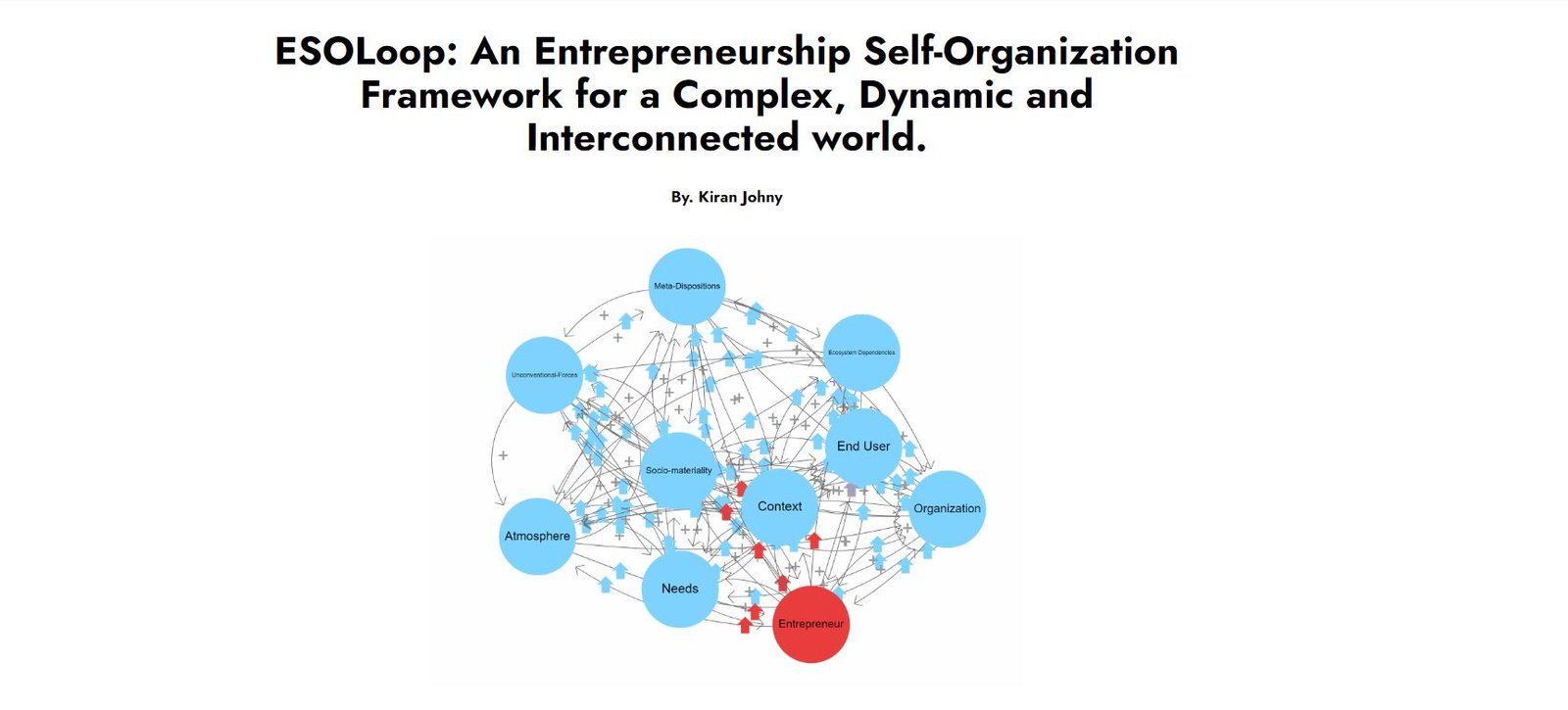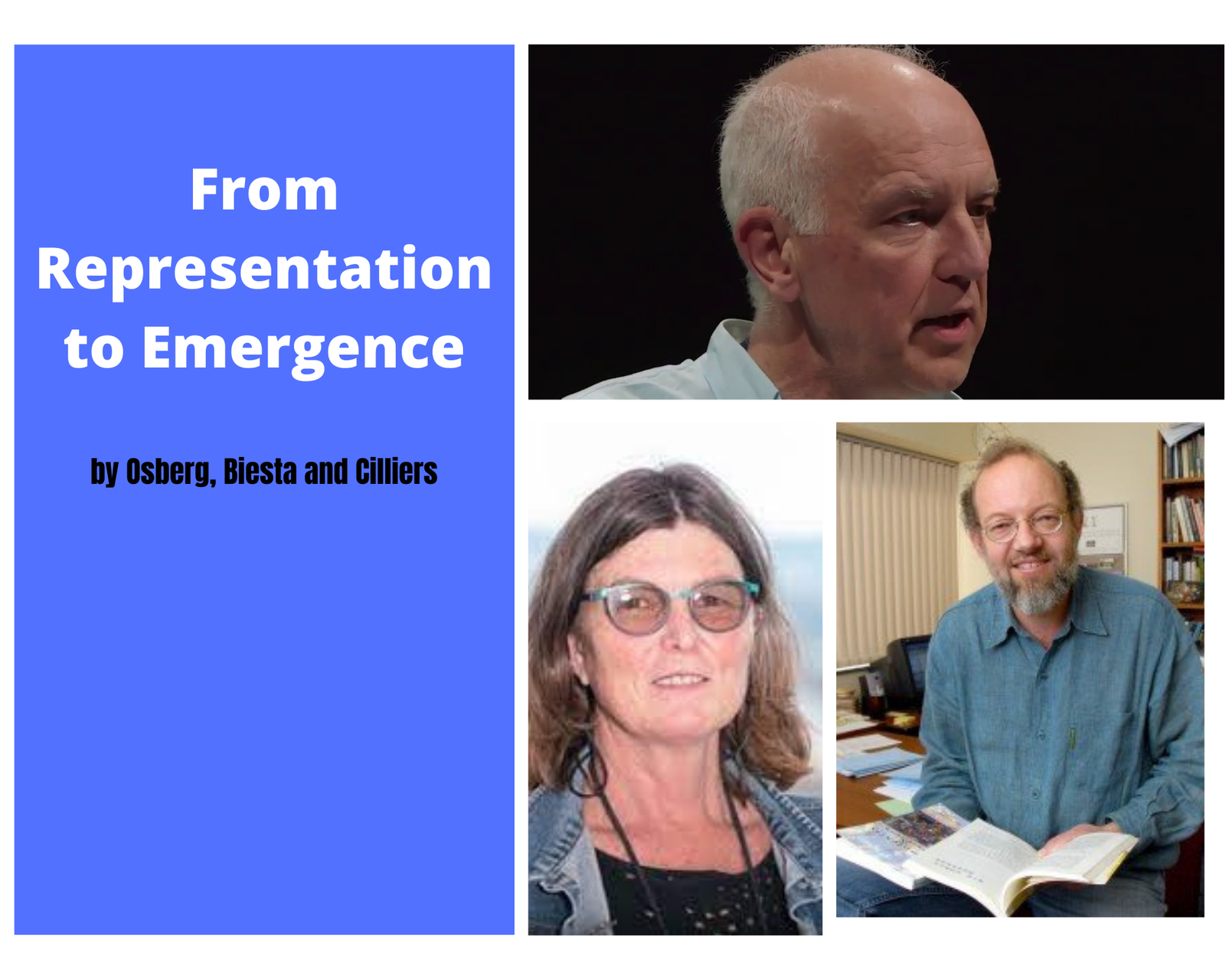Synergetics is an interdisciplinary theoretical approach that studies self-organization in complex systems(systems that are characterized by openness, dynamics, and complexity). It was developed by physicist Hermann Haken(1969) through his research experiments on laser light. He noticed unpredictable patterns emerging that cannot be explained by linear models. The properties of light change in a self-organized manner when the laser reaches a critical point or “laser threshold”, and such emergent order sets the control parameter which enslaves the system.
(This is an updated post)
For a real explanation, listen directly from the master: Hermann Haken
Synergetics and Entrepreneurship
My initial exposure to synergetics from an entrepreneurship related scholarship started with reading Jeffrey Goldstein’s article(attached) in which he stressed his radical construction point of view that paints a negative picture. He argues;
“Although these connotations of self-organization have provided a corrective to the outdated belief that novel order in a system can only come about through the imposition of external order, a careful inspection of research in complexity theory reveals that the emergence of new order is more appropriately constructed rather than self-organized as such (Goldstein 2003).”
EMERGENCE, CREATIVITY, AND THE LOGIC OF FOLLOWING AND NEGATING by Goldstein’ 2015
Goldstein further specifically pointed to Haken; in that he adds;
“An example is that much touted emblem of self-organization, the laser with its property of ultra-focused coherence (see Haken, 1981). In actuality, though, laser light hardly comes about either spontaneously or through inner direction. On the contrary, it requires the most stringent of laboratory manipulations and constraints (see a list of these in Strogatz, 2003). An examination of other examples of self-organization reveals a similar constructional nature of emergent phenomena (see, e.g., Nicolis, 1989)”
EMERGENCE, CREATIVITY, AND THE LOGIC OF FOLLOWING AND NEGATING by Goldstein’ 2015
I definitely don’t buy this argument by Goldstein. I believe as always that self-organization is a ubiquitous feature of all open complex adaptive systems.
Andreas Liening of TU Dortmund
In entrepreneurship, a pioneering effort to apply Synergetics is coming from Prof Andreas Liening and colleagues of TU Dortmund. The top reads are;
- Complexity and Entrepreneurship: Modeling the Process of Entrepreneurship Education with the Theory of Synergetics
- Synergetics—Fundamental Attributes of the Theory of Self-Organization and Its Meaning for Economics(OPEN Access)
Although I am extremely interested in reading anything relating to entrepreneurship and complexity, I totally disagree with the “Entrepreneurship Mindset” as the purpose of Entrepreneurship Education promoted by Liening. To see my reasons check this, this, this, this, this and this
It is very easy to fall into the trap of traditional representational cognitive psychology and its lazy dependence on decontextualized hard or impossible to define concepts like Mindset.
Some potential issues with application of self-organization and synergetics in education
It is confusing when an outsider looks at education and learning science for the first time to find application ideas. It is very easy to be trapped in a cultish eco-chamber. Even though I agree that It is essential to read people whom we disagree with, a serious issue arises when we start to blindly believe everything they say. This is especially true if one doesn’t have the necessary expertise and diversity in their system to figure out the flaws of the argument.
Example; Paul A. Kirschner who is one of the most reductionist of all the education scholars with his famous works like, “Why Minimal Guidance During Instruction Does Not Work” is also famous for his work on learning in complexity, ” Ten steps to complex learning”. A new observer might be mistaken to believe that Kirschner is the go to authority in complexity in education. This is a huge mistake. This points to serious issues with the application of synergetics in particular and complexity science in general without any understanding of domain epistemology.
- Those with domain expertise may use complexity theory to fit in with their long-accumulated path dependency.
- They may use a complexity tag to avoid being called a reductionist.
- Those with complexity background may fall for the obvious and visible part of domain knowledge.
- Those with ideas and tools to sell may try craft a much less uncertain version of complexity;.
- As often pointed out by people like Dave Snowden, those with a complexity background, especially those associated with mathematical modeling and Santa Fe may assume that they can model human complexity by developing agent-based models as they do for some idealized version of Ant behavior. This can be viewed as a reductionistic tendency inside the complexity sciences (http://www.human-current.com/archived-episodes/tag/anthrocomplexity)
All the above can be viewed as going against the ethics of complexity, especially when proposed as solutions for other people and other people’s children.
According to Synergetics Philosophers Helena Knyazeva and Sergey Kurdyumov, “The synergetic assertions can apply to many scientific disciplines. They are functioning on the level from which a great scope of scientific disciplines can be embraced. However, such an approach has also a negative side. The higher the level of the view is the less concrete details can be distinguished. On the other hand, the deeper we penetrate particular details the less place seems to remain for synergetics itself” They adds; “Synergetics can provide us only with general frames of consideration, a mental scheme or a heuristic approach to a concrete scientific investigation. Concrete applications of synergetic models to complex human or social systems presuppose further detailed scientific investigations. Such investigations can be carried out only by the use of a profound knowledge of a certain disciplinary field and/or with a close collaboration with specialists in a corresponding scientific discipline. Thus, synergetics gives a certain approach or a direction of research, or, to put it in terms of psychology, a scientific attitude. The rest is the matter of every concrete investigation”
Some interesting articles by Russian philosopher Helena Knyazeva on synergetics are attached
Synergetics: New Universalism or Natural Philosophy of the Age of Post-Nonclassical Science?
ARBITRARINESS IN NATURE: SYNERGETICS AND EVOLUTIONARY LAWS OF PROHIBITION(Co-authored with Haken)
SYNERGETICS OF HUMAN CREATIVITY; HELENA and HAKEN
The Synergetic Principles of Nonlinear Thinking
Synergetics and the Images of Future
Nonlinear synthesis and co‐evolution of complex systems
NONLINEARITY OF TIME IN THE COMPLEX WORLD
The Synergetic World View and Its Synthetic Value
FIGURES OF TIME IN EVOLUTION OF COMPLEX SYSTEMS
Recent works
Virtual Reality from the Standpoint of Complexity Science
Paradigm Shift in the Understanding of the Creative Abilities of Consciousness
Strategies of Dynamic Complexity Management
Active Innovative Media as Co-Evolutionary Landscapes
Cognitive Networks: Interactivity, Intersubjectivity, and Synergy
Complexity Studies: Interdisciplinarity in Act
The Idea of Co-evolution; Towards a New Evolutionary Holism


